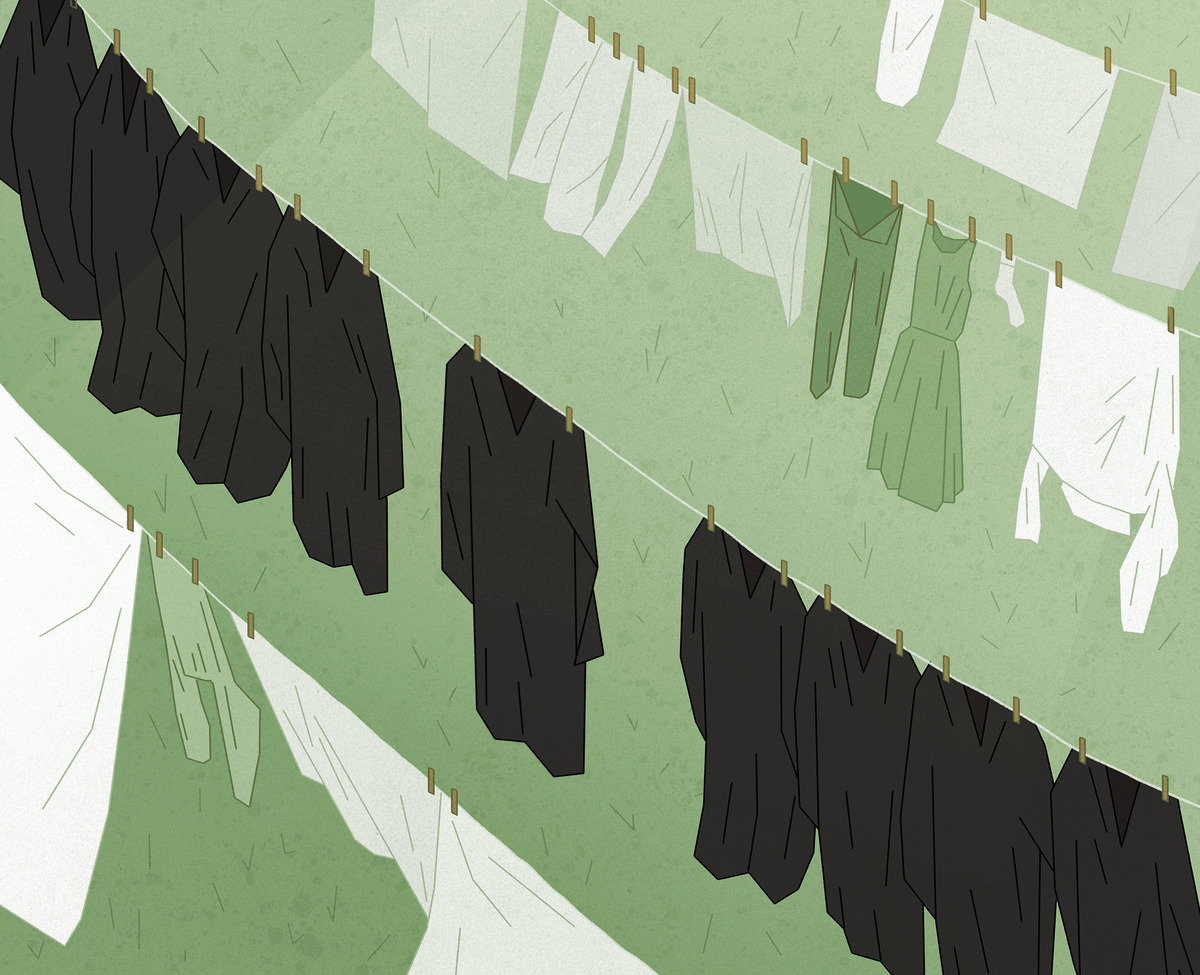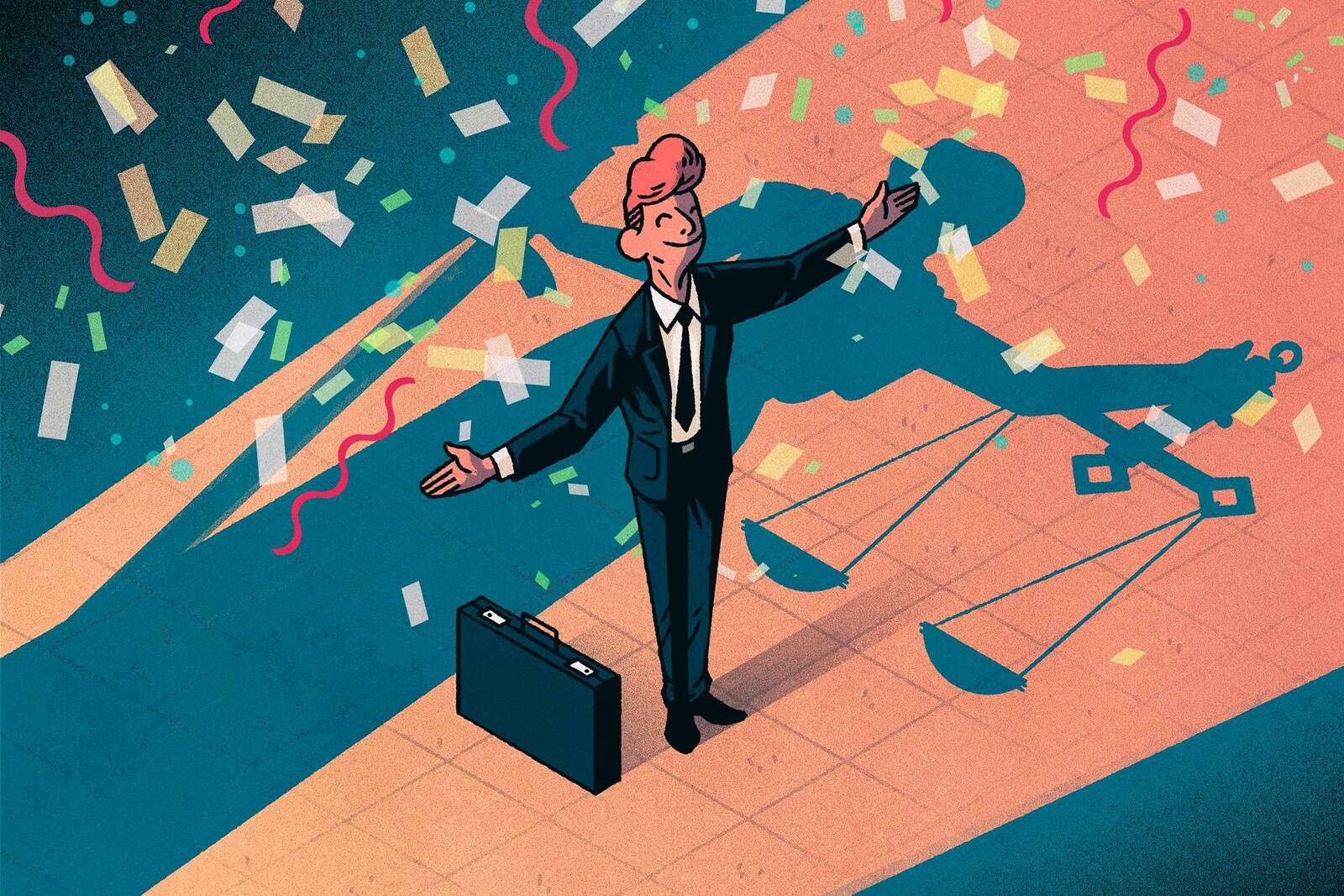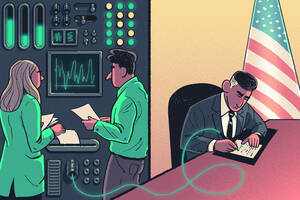Policy Sep 13, 2018
Supreme Court Justices Become Less Impartial and More Ideological When Casting the Swing Vote
A new study suggests that justices may treat cases differently when given a chance to shape policy.

In her dissenting opinion on a landmark 2018 Supreme Court case with major consequences for organized labor, Justice Elena Kagan pulled no punches.
The Court’s conservative-leaning faction—composed of Justices Alito, Roberts, Kennedy, Thomas, and Gorsuch—had overruled a long-held precedent “for no exceptional or special reason, but because it never liked the decision,” she argued. “It has overruled [the precedent case] because it wanted to.”
Reading that opinion, Jörg Spenkuch, an associate professor of managerial economics and decision sciences at Kellogg, thought that it might hold the answer to a long-standing puzzle about the Court.
Since the 1940s, political scientists have known that the ideology of a judge—whether conservative or liberal—often predicts which way he or she will vote. Less clear, however, is why. Some have argued that judges earnestly try to enforce the law impartially—as John Roberts stated in his 2005 confirmation hearing: “It’s my job to call balls and strikes, and not to pitch or bat.” In this view, conservatives and liberals come to different rulings simply because they interpret the Constitution differently.
But, as Kagan’s dissent hinted, there is another, more cynical hypothesis: that judges are wannabe policymakers actively seeking to push the law in the direction of their choosing.
“The question is, how do you figure out using data what is and isn’t true?” Spenkuch says.
In a new paper with B. Pablo Montagnes and Tom S. Clark of Emory University, Spenkuch sought to determine if the idea that judges are policymakers holds water. The team analyzed votes by Supreme Court justices on more than 8,500 cases since World War II. They found that when a justice casts the deciding vote, his or her personal beliefs suddenly matter far more.
“The effect of a justice’s ideology on how he or she votes essentially doubles when the vote is pivotal,” Spenkuch says.
The results prompt serious questions about the neutrality of the judicial branch, since it suggests that a justice may treat a case differently just because it presents a chance for them to shape policy. “Our idea of a good judge is that of an impartial umpire,” Spenkuch says. “But justices in some cases disregard the role of the umpire in favor of that of the politician.”
Supreme Court Decision-Making
In the 1980s, Supreme Court scholars pioneered a creative way to ascertain a judge’s ideological leanings. Scouring editorials about a justice published in major U.S. newspapers in the months following his or her nomination, they determined whether that individual was perceived as liberal or conservative, and how far from center he or she fell.
Strange as it may seem, this technique has proved remarkably effective. A judge whom editorial writers depict as a mild conservative, or a hardline liberal, will often vote like one.
But judges are not equally partisan in every case. Many rulings are 9-0, and even a sturdy liberal or conservative will occasionally side with the opposite camp. So why does ideology matter in some cases but not others?
“The effect of a justice’s ideology on how he or she votes essentially doubles when the vote is pivotal.”
In the past, scholars have argued that ideology comes into play when there are differing legal interpretations involved, or because certain litigants touch a nerve with particular justices. But Spenkuch and his colleagues wanted to test a new theory: that a judge votes more in-line with their ideology when their vote matters more.
Spenkuch had several reasons to suspect this. Not only do opinions like the Kagan dissent suggest that justices relish affecting an important precedent, he says, but the Court’s decision-making process ensures that justices know when they, personally, have an opportunity to do so.
After the Supreme Court hears oral arguments, the justices meet in private to discuss the case at hand. Although no reporters are allowed in the room, memoirs from former justices describe what happens next. “They sit around the table and they talk in order of seniority about the case—what they think the legal arguments are, and how the case should be decided,” Spenkuch says.
Thus, every justice will know how every other justice is planning to vote and whether their own vote could be the deciding factor in the case.
In order to determine whether their suspicion was correct, the researchers turned to the Supreme Court Database, a massive public collection of detailed information about every case since 1946. The database also includes attributes of individual justices, including individual votes and an ideology score (computed with the newspaper-editorial technique).
The researchers used statistical methods to determine whether each judge reliably swung further towards one side when his or her vote was pivotal versus non-pivotal.
“What I mean by ‘pivotal’ is that, if you change your vote, holding all else constant, the case would be decided differently,” he explains. “So in a 5-4 decision, every justice in the majority is pivotal—not just the median justice.”
“Politicians in Robes”
The researchers found that, when casting a pivotal vote, liberal justices are more likely to vote liberally while conservatives are more likely to vote conservatively, compared to when those same judges cast a non-pivotal vote.
In short, justices vote differently when they realize that their vote really matters.
And the pattern becomes more pronounced for justices who are more ideologically extreme. The researchers found that the more liberal or conservative a justice is, the more frequently he or she votes in that direction when casting the deciding vote.
Next, the researchers wanted to break down why being pivotal mattered so much. Was it simply about who wins the case or about the precedent it sets when being cited in future cases?
To dissect these two factors, they took advantage of the fact that a judge can agree with other justices about which litigant is in the right, but will disagree about why. In those instances, the judge writes a separate opinion, in which he or she lays out his or her unique reason for the vote. When this happens, separate opinions are issued, and every justice can choose which opinion to join.
That means that there are times when a judge’s vote is not pivotal for the outcome of the specific case but is pivotal for setting case precedent. This is because for lower courts to be bound by a Supreme Count opinion, five justices need to have backed that opinion. So it is possible for a case to have six certain votes siding with, say, the prosecution, but for those six justices to be split 4-2 between Explanation A and Explanation B. In this case, one of the remaining justices can become pivotal if they join the four justices, thus making Explanation A the precedent.
Analyzing these unusual cases, Spenkuch and his collaborators were able to parse whether pivotal votes mattered because judges wanted to shape precedents or because they wanted to shape outcomes.
“And what we show is that both seem to matter,” he says.
Considering the Supreme Court Tiebreaker Theory
While these findings seemed to support “the idea that justices are really politicians in robes,” as Spenkuch puts it, there was an alternative explanation to consider. Prominent jurist-cum-economist Richard Posner has argued that in cases with ample ambiguity and strong legal arguments on both sides, judges’ ideology is not so much a driving motivation, but a nudge that can help make a tough decision.
“In Posner’s view, the reason justices vote ideologically is that they would like to call the balls and strikes, but they lack the necessary information to do it,” Spenkuch says, so they let their ideology take the place of that information.
If this was the case, then judges may be more partisan in pivotal votes not because they are trying to impact the outcome, but because being pivotal goes hand in hand with more ambiguity. That would mean that pivotal justices should become more polarized in especially ambiguous cases.
“So we looked at situations where there should be more uncertainty on legal grounds,” Spenkuch says.
The researchers isolated the cases in which lower courts had disagreed about the correct ruling, suggesting that there was considerable uncertainty in the law. In those cases, pivotal voters were actually less ideological than in nonambiguous cases—the opposite of what Posner’s theory predicted.
“That, I think, lets us rule out Posner’s tiebreaker explanation,” Spenkuch says.
Not Umpires After All?
Spenkuch believes that his findings fly in the face of how Supreme Court justices try to present themselves. “During confirmation hearings, no justice ever admits that they’re interested in making policy,” he says, alluding to Roberts’s claim that judges simply “call balls and strikes.”
The study casts doubt on that claim. And it poses a big question about the true role of the Court, since justices may be changing their votes based on how their colleagues vote.
“There is a nontrivial number of cases that would be decided differently if justices did not vote strategically,” he says. “It draws into doubt the notion of the Supreme Court as an institution where litigants come to get justice.”



